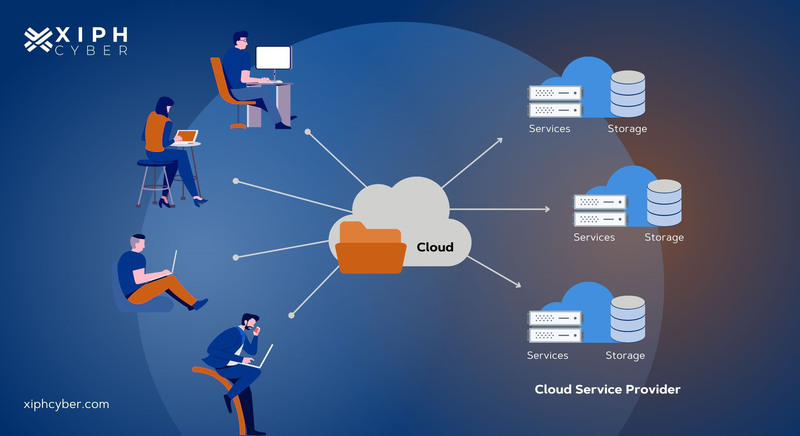Making Best Use Of Information Safety And Security: Tips for Protecting Your Details With Universal Cloud Storage Services
In an era where information breaches and cyber hazards are on the increase, securing delicate information has ended up being a critical issue for people and organizations alike. Universal cloud storage solutions use exceptional ease and access, but with these advantages come intrinsic safety dangers that need to be dealt with proactively. By carrying out durable information protection procedures, such as encryption, multi-factor authentication, normal back-ups, access controls, and keeping an eye on protocols, customers can considerably enhance the defense of their data stored in the cloud. These methods not only fortify the honesty of details yet likewise instill a sense of self-confidence in turning over vital data to shadow platforms.
Importance of Information File Encryption
Data file encryption works as a fundamental column in securing delicate information stored within universal cloud storage space services. By encoding information in such a means that just licensed parties can access it, security plays an important function in securing personal info from unapproved access or cyber threats. In the world of cloud computing, where information is usually transmitted and stored throughout various networks and servers, the need for robust security systems is extremely important.

Moreover, conformity policies such as the GDPR and HIPAA require data security as a way of shielding sensitive details. Failing to follow these criteria can cause serious consequences, making data file encryption not simply a security action however a legal need in today's digital landscape.

Multi-Factor Authentication Methods
Multi-factor verification (MFA) adds an additional layer of protection by needing customers to supply multiple kinds of verification before accessing their accounts, significantly lowering the danger of unapproved access. Typical aspects made use of in MFA consist of something the customer recognizes (like a password), something the individual has (such as a smartphone for obtaining verification codes), and something the user is (biometric data like finger prints or facial acknowledgment)
To optimize the effectiveness of MFA, it is crucial to pick verification variables that vary and not conveniently replicable. In addition, routine monitoring and upgrading of MFA settings are necessary to adapt to advancing cybersecurity hazards. Organizations ought to also enlighten their individuals on the importance of MFA and supply clear directions on just how to establish and use it securely. By implementing solid MFA techniques, businesses can significantly bolster the safety and security of their data stored in global cloud services.
Regular Information Backups and Updates
Provided the vital duty of protecting information honesty in global cloud storage services via robust multi-factor verification approaches, the following crucial element to address is making sure normal information backups and updates. Regular information backups are vital in alleviating the risk of information loss as a result of numerous factors such as system failures, cyberattacks, or accidental deletions. By backing up information consistently, companies can restore info to a previous state in case of unanticipated occasions, therefore maintaining business continuity and protecting against considerable interruptions.
Additionally, remaining up to day with software program updates and security patches is equally vital in enhancing data security within cloud storage services. In essence, view website routine information back-ups and updates play an essential role in fortifying data safety and security actions and safeguarding critical details saved in universal cloud storage services.
Executing Strong Accessibility Controls
Gain access to controls are crucial in avoiding unapproved access to sensitive data kept in the cloud. By implementing solid accessibility controls, organizations can make sure that only authorized employees have the essential permissions to check out, modify, or delete data.
One efficient way to impose access controls is by making use of role-based accessibility control (RBAC) RBAC designates particular duties to users, providing them gain access to legal rights based on their role within the organization. This technique makes sure anchor that customers just have accessibility to the information and functionalities required to perform their work responsibilities. In addition, implementing multi-factor authentication (MFA) includes an added layer of protection by needing users to offer several types of verification prior to accessing delicate data.
Tracking and Bookkeeping Information Accessibility
Structure upon the structure of solid access controls, effective surveillance and bookkeeping of data gain access to is vital in keeping data safety honesty within global cloud storage solutions. Tracking information gain access to entails real-time tracking of who is accessing the information, when they are accessing it, and from where. Bookkeeping information access includes assessing logs and documents of information access over a particular period to make sure conformity with safety policies and guidelines.
Verdict
To conclude, protecting information with global cloud storage space services is important for safeguarding delicate details. By executing data file encryption, multi-factor verification, regular backups, strong gain access to controls, and keeping track of data access, organizations can reduce the threat of Full Article data breaches and unauthorized gain access to. It is necessary to prioritize information safety gauges to make certain the confidentiality, integrity, and accessibility of data in today's digital age.